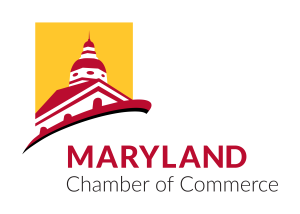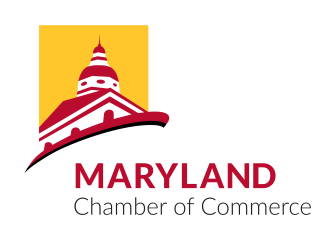
As the Industry Shifts Investment Focus, Manufacturing Expansions in Baltimore and Neighboring States Stand in Contrast to R&D Setbacks coming out of Montgomery County
Maryland’s life sciences sector is again facing difficult headlines. As reported in the Washington Business Journal, Pharmaceutical giant Amgen is seeking tenants for a 192,000-square-foot facility in Rockville, a building originally envisioned as a major R&D hub by Horizon Therapeutics before its 2023 acquisition which would have employed 200 scientists. The move follows GlaxoSmithKline’s planned departure from a 635,000-square-foot vaccines complex in Montgomery County, adding to the perception that major pharmaceutical firms are retreating from Maryland’s research and development landscape.
These announcements come as the region grapples with broader workforce reductions. Over the past year, nearly 1,200 industry jobs have been cut in Maryland and the surrounding area, alongside approximately 5,000 layoffs at the U.S. Department of Health and Human Services are impacting the local region. For Maryland’s highly educated workforce which includes thousands of PhDs employed at NIH, federal labs, universities and life science companies, these contractions represent a narrowing of career pathways in the state that has long prided itself on being a hub of scientific discovery.
While R&D investments appear to be retreating, Maryland has seen bright spots in the biomanufacturing sector. In 2024, Taiwan-based Bora Pharmaceuticals acquired Emergent BioSolutions’ fill-finish facility in Baltimore, securing jobs for hundreds of employees and adding sterile injectable capabilities to its U.S. footprint. Earlier this year, India’s Syngene International purchased Emergent’s Bayview biologics facility in East Baltimore for $36.5 million, pledging additional capital to restart production and bring new capacity online by late 2025. Both transactions suggest that Maryland’s existing infrastructure and biomanufacturing talent base still hold appeal for contract manufacturing organizations, even as big pharma shifts its discovery investments elsewhere.
The divergence is underscored by what is happening just beyond Maryland’s borders. In September, GSK announced a $1.2 billion “biologics flex factory” in Upper Merion, Pennsylvania—part of a $30 billion U.S. investment plan that includes upgrades to other manufacturing sites but not to its shuttered R&D presence in Montgomery County. In Virginia, AstraZeneca has committed to a multibillion-dollar manufacturing facility described as its single largest U.S. investment to date, while state officials also approved incentive packages for a potential Eli Lilly site outside Richmond. Local firm Afton Scientific recently broke ground on a $200 million expansion of its sterile injectables plant in Albemarle County, projecting at least 200 new jobs.
Further south, North Carolina continues to solidify its reputation as the nation’s biomanufacturing powerhouse. Biogen is investing $2 billion to expand in Research Triangle Park, Roche’s Genentech unit is building a $700 million facility in Holly Springs, Novo Nordisk is adding $4.1 billion to its Clayton campus, and Fujifilm Diosynth has opened a $3.2 billion biologics facility—part of more than $10 billion in announced life sciences investments across the state since 2024.
The contrast is stark. While Maryland contends with an oversupply of lab space and the loss of marquee R&D anchors, neighboring states are attracting headline-making manufacturing projects backed by billions in capital and thousands of new jobs. For Maryland, the pattern signals an economic and strategic shift: from being home to globally recognized discovery hubs to hosting a smaller but still significant share of the nation’s biomanufacturing footprint.
Industry Trends: Manufacturing Up, R&D Down
The Maryland story is not occurring in isolation. Across the industry, large pharmaceutical companies are reallocating capital toward manufacturing infrastructure while trimming their R&D headcount. The move reflects both market and technological pressures. The COVID-19 pandemic exposed vulnerabilities in global supply chains, spurring governments and companies alike to prioritize domestic manufacturing capacity. Meanwhile, breakthroughs in artificial intelligence and computational biology are enabling drug discovery with fewer scientists, reducing the need for expansive R&D campuses.
Companies are increasingly outsourcing research to smaller biotech partners or contract research organizations while concentrating their own capital on production facilities that can meet commercial demand. As a result, states offering fast permitting, strong incentives, and a skilled technical workforce are winning billion-dollar investments in manufacturing, even as traditional R&D hubs like Maryland and Massachusetts grapple with slower growth or retrenchment in discovery roles.
Maryland’s Talent Question
That raises a critical question: what happens to Maryland’s scientific workforce in this transition? The state still boasts one of the nation’s highest concentrations of PhDs, particularly in life sciences and engineering. Many of these researchers are tied to NIH, FDA, and other federal institutions, giving the region unparalleled expertise in discovery and regulatory science. But with private-sector R&D footprints shrinking and layoffs mounting, the risk is that thousands of highly trained professionals may be left on the sidelines.
For Maryland, the stakes are high. Losing this talent base—or failing to connect it to the next wave of life sciences investment—could erode the very foundation of its competitive identity. Neighboring states are betting on biomanufacturing; Maryland must now reckon with how to leverage its scientific capital in an industry where the center of gravity is shifting. The question remains unanswered: can Maryland remain a hub for world-class scientific talent if the companies that once fueled its growth are choosing to build elsewhere?
“My hope is that the Amgen sublease can be used to recruit another significant tenant to Maryland,” shared Andrew Davis, senior vice president with Rockville real estate firm Scheer Partners.
The significant impact of this industry can’t be understated since for every one biopharmaceutical job, 3.6 additional jobs are supported across other industries. At a time where Maryland is facing budget pressures, the industry needs bold action more than ever to incentivize big biopharma to look at Maryland and our workforce for their next investment or expansion.



